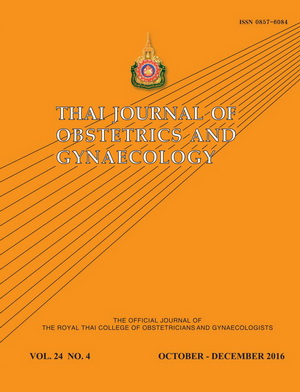Role of Biomarkers in Screening and Diagnosis of Ovarian Cancer
Main Article Content
Abstract
The overall mortality of ovarian cancer exceeds that of other gynecologic cancers owing to lack of disease-specific symptoms. Three quarters of patients with ovarian cancer are diagnosed after the disease has progressed to advanced stage. Thus, improvement of an effective screening tool could result in better prognosis and survival.
To date, cancer antigen 125 (CA-125) is the most commonly used serum biomarker for detecting ovarian cancer. However, the test has low sensitivity for the disease detection (50-62% for early stage epithelial ovarian cancer) and limited specificity. Therefore, CA-125 as a single test is not recommended for ovarian cancer screening in asymptomatic women.
CA-125 in combination with human epididymis protein 4 (HE4) and Risk of Ovarian Malignancy Algorithm (ROMA) is becoming widely used in clinical practice for the evaluation of adnexal masses. Clinical examination, transvaginal ultrasonography (TVS) and serum biomarkers (ROMA) more effectively classify the patients into low and high risk of ovarian malignancy. The classification allows to direct the patients to appropriate management by gynecologic oncologists, and thus the survival rate could be improved.
Role of serum biomarkers as the screening and diagnosis of ovarian cancer is described in this review.


